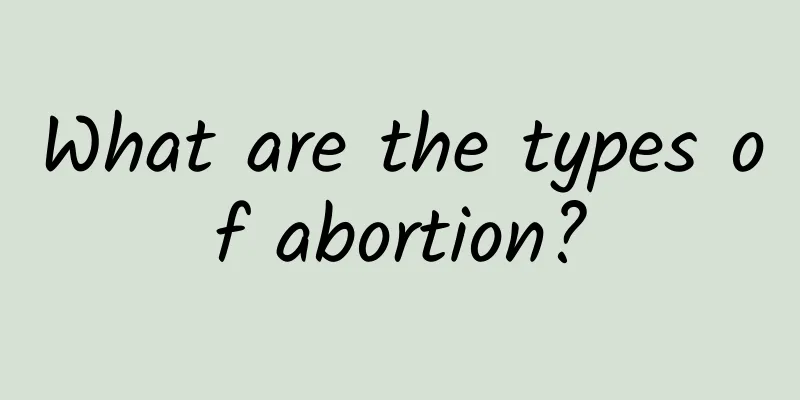What are the types of abortion?

|
As we all know, the experience of miscarriage can easily cause a hidden worry for the next pregnancy. Miscarriage can cause trauma to the uterus and sometimes may cause infection, affecting further pregnancy. So, unless it is absolutely necessary, you must not choose to terminate the pregnancy artificially. So, how many types of miscarriage are there? Please follow the editor to see the introduction below. Threatened abortion: The main symptoms are a small amount of vaginal bleeding and mild lower abdominal pain or back pain. During the gynecological examination, the cervix is not open and the size of the uterus is consistent with the month of pregnancy. The urine test is positive. The treatment at this time should be to preserve the fetus - that is, rest in bed and refrain from sexual intercourse. · Miscarriage is inevitable: The amount of bleeding is large, often exceeding the amount of menstruation, with paroxysmal lower abdominal pain and even water rupture. In this case, you should go to the hospital in time to empty the uterus as soon as possible. Complete miscarriage: After a short period of abdominal pain, the embryonic tissue is completely expelled, the abdominal pain stops, and the bleeding decreases. Generally, no treatment is required. Incomplete abortion: Part of the embryo or placenta has been expelled, but part remains in the uterus. Heavy bleeding and even shock may occur. Infectious abortion: Incomplete abortion without timely uterine cleaning, or self-induced abortion without disinfection can cause intrauterine infection. Fever, lower abdominal pain, vaginal discharge of pus and blood with a foul odor are common. At this time, you should go to the hospital for treatment in time. ·Miscarriage: Refers to the embryo that has died for more than two months and has not been expelled. It is manifested by small amounts of frequent vaginal bleeding, dark in color, and no abdominal pain. The uterus no longer grows, but shrinks instead, and the urine test turns negative. Because the embryo tissue dries up, it sticks to the uterine wall and is not easy to be expelled. Habitual abortion: Spontaneous miscarriage that occurs more than three times in a row is called habitual miscarriage. Its characteristic is that each miscarriage almost occurs in the same month of pregnancy. Its treatment is mainly to find out the cause and then treat it. The above is an introduction to the types of abortion. I hope it will be helpful to you. |
<<: Introduction to common knowledge about abortion
>>: Introduction to artificial abortion
Recommend
What is an ovarian cyst?
Ovarian cysts are a common gynecological disease ...
Will I lose muscle if I do intermittent fasting to lose weight? Combine weight training with adequate protein to increase muscle and reduce fat
Fasting for 24 hours three times a week is certai...
What to do if women in their forties have menstrual disorders
What should women in their forties do if they hav...
Is 19mm of pelvic fluid serious?
Pelvic fluid accumulation of 19 mm is usually not...
What are the symptoms of uterine fibroids after pregnancy? Treatment of uterine fibroids
The symptoms of uterine fibroids after pregnancy ...
7 points to note after medical abortion
Many female friends think that medical abortion o...
What Chinese medicine should I take for a 6 cm uterine fibroid? Can a 6 cm uterine fibroid be treated with minimally invasive surgery?
What Chinese medicine should I take for a 6 cm ut...
Don’t get a fat belly! Drink less coffee to lose weight and avoid fat accumulation
Coffee is the spiritual companion of many people....
How much does it cost to get tested for endometriosis?
As our living standards continue to improve, our ...
What are the causes and symptoms of cervical erosion?
Cervical erosion is a physiological change of cer...
Traditional Chinese medicine treatment for cervical erosion What are the methods to stay away from cervical erosion
Cervical erosion is a common female disease, main...
What is the most effective method for treating pelvic peritonitis?
In the process of treating pelvic peritonitis, th...
What are the causes of cervicitis in women? Recommend several dietary treatments for cervicitis
What are the other causes of cervicitis? 1. Mecha...
Experts explain the important postoperative care of adnexitis
Patients with adnexitis will be weak after receiv...
What are the symptoms of multiple uterine fibroids? What are multiple uterine fibroids like?
The symptoms of multiple uterine fibroids in the ...









